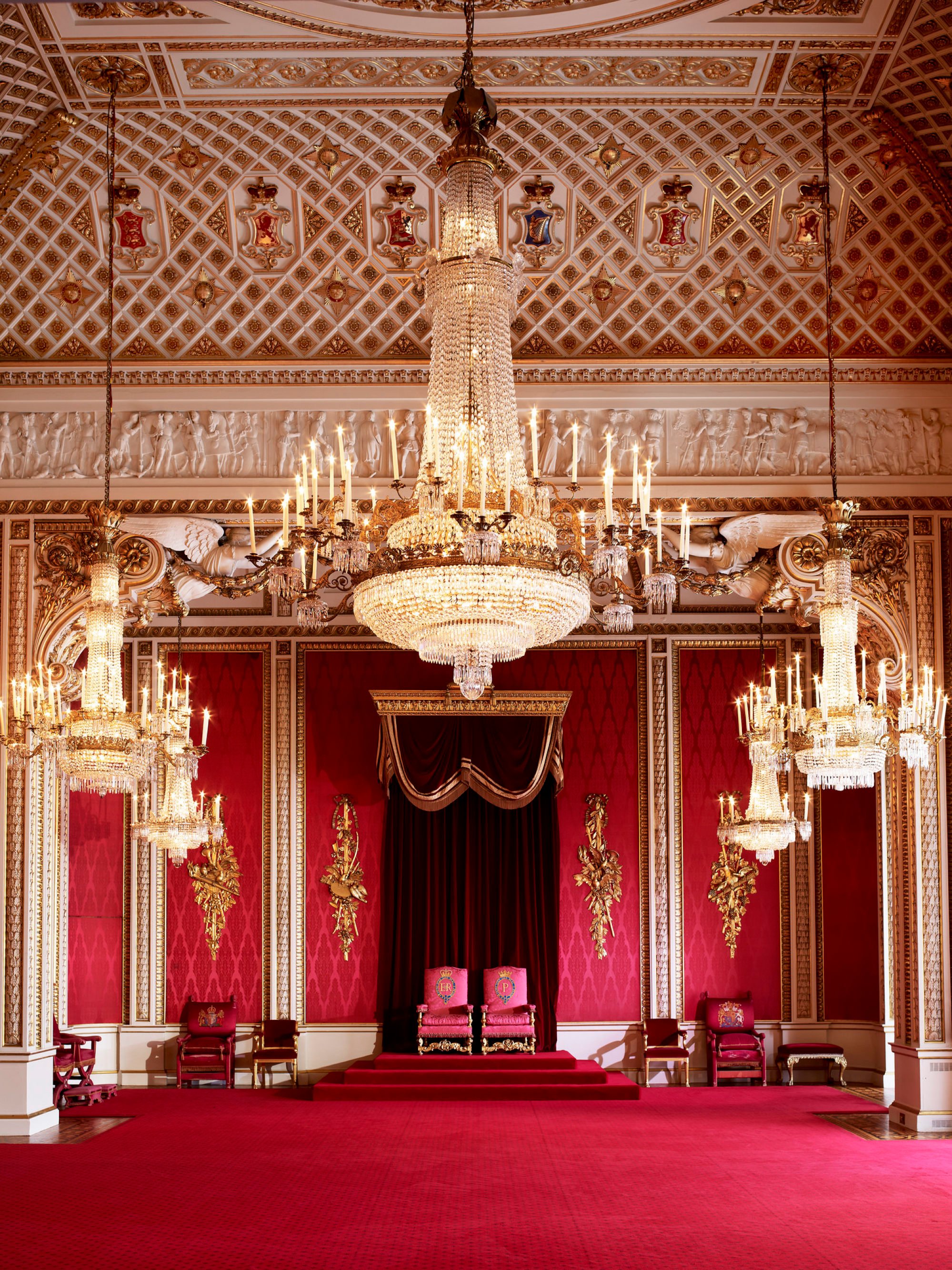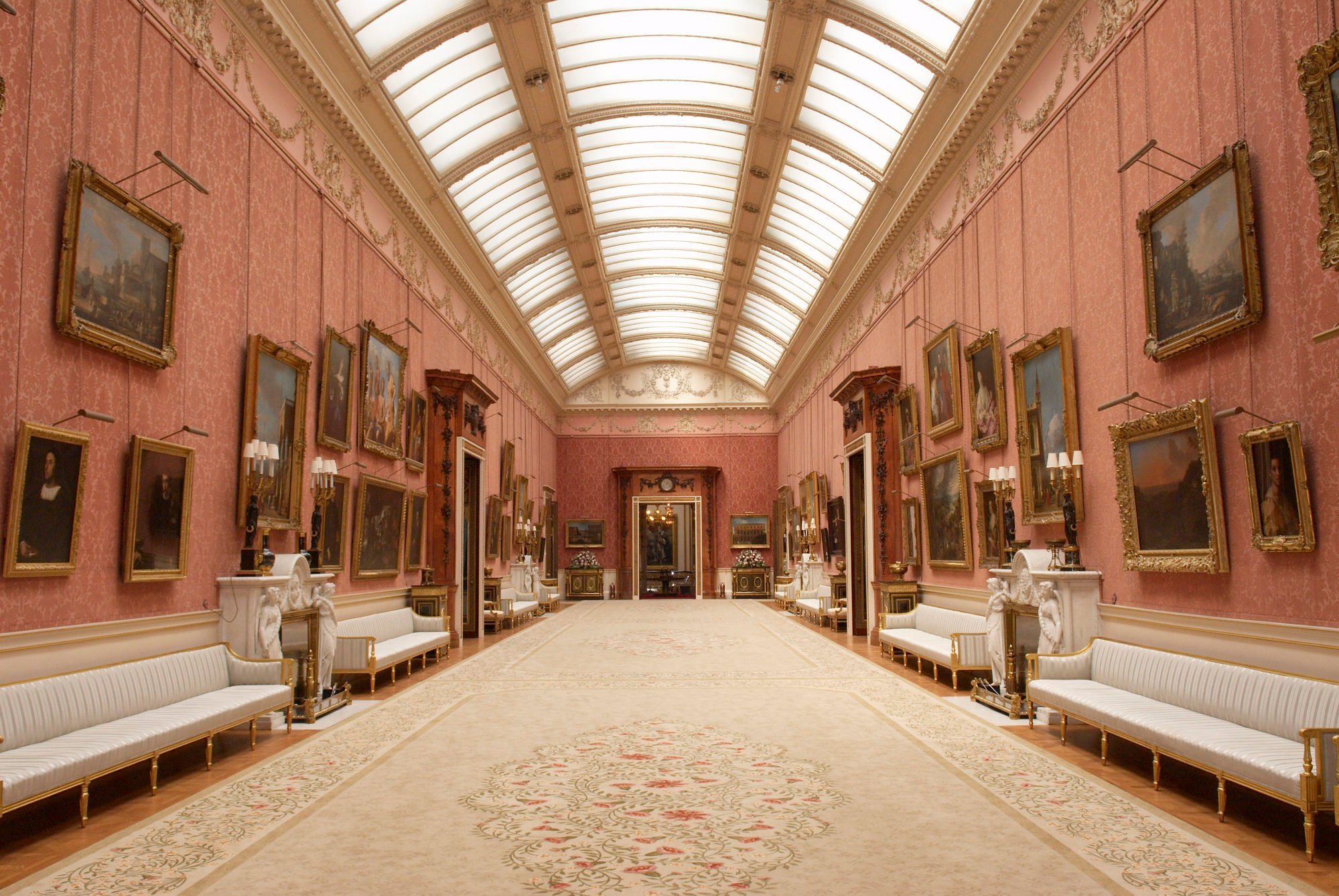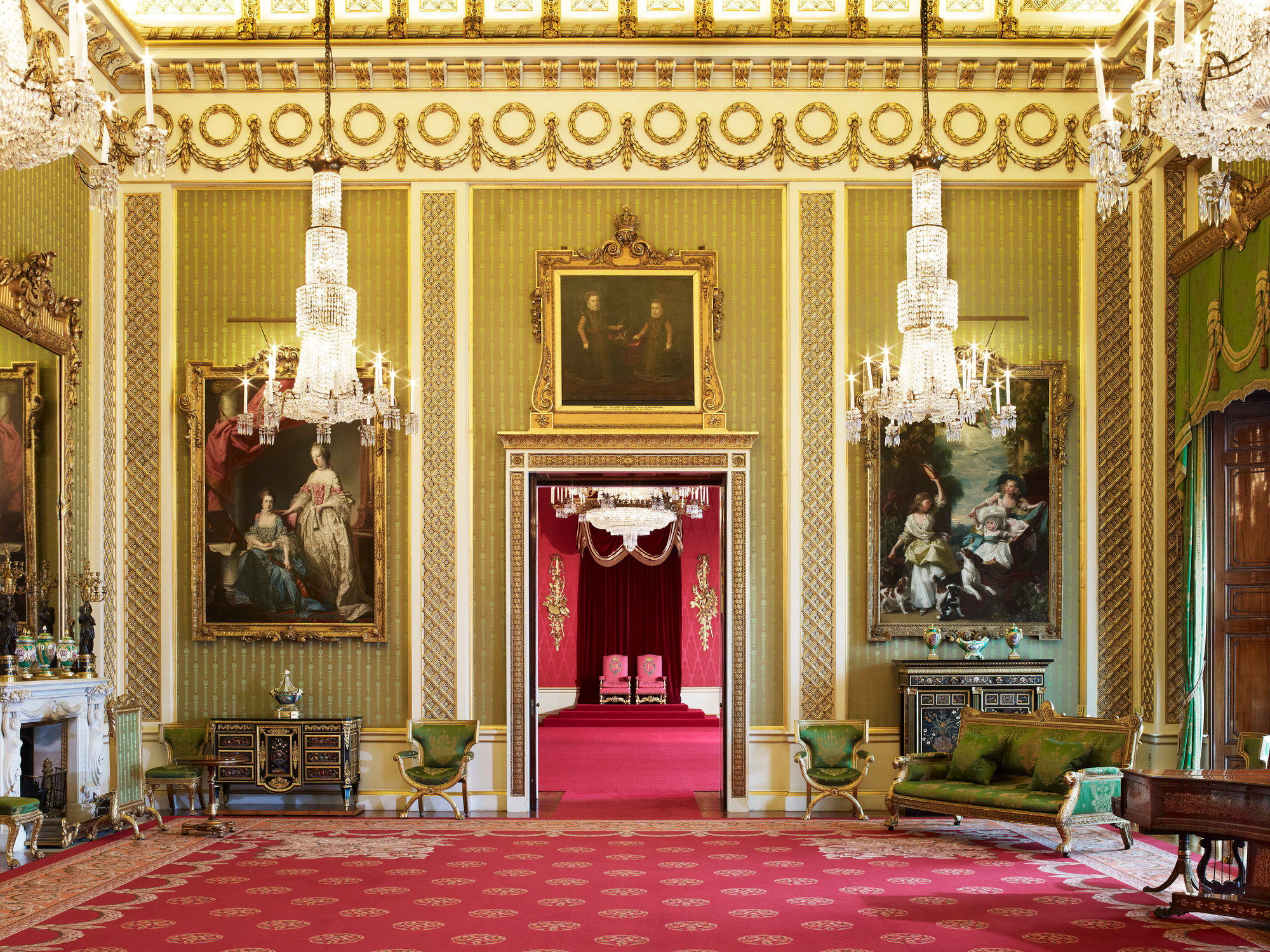
What’s Buckingham Palace like? Inside the British royals’ State Rooms, as tours open for the first time since 2019
- We visit the 19 splendid State Rooms where the British royal family meets and entertains official visitors, in the West Wing of the palace
- A special display in the Ball Supper Room celebrates the queen’s 70th year on the throne, featuring portraits taken by an official royal photographer
Walking up the red-carpeted, gold-leafed, double-pronged Grand Staircase, it’s hard not to entertain thoughts of “You shall go to the ball!”
I’m at London’s Buckingham Palace to visit the State Rooms, which are open to the public this summer, until October 2, for the first time since 2019.
The State Rooms, where the British royal family meets and entertains official visitors, lie deep beyond the famous facade, in the West Wing of the palace.
Entry for the paying public, which costs £30 (US$36) per adult, with concessions available, is not through the front gates but at the side, on Buckingham Palace Road, although once through “airport-style security” (where the staff are much more polite than at any airport I’ve ever been to) we access the same grand rooms as the dignitaries.

But first we’re given a few rules: no gum chewing (“you can’t imagine where we find it”), no photographs of the State Rooms – and no toilet stops until the end of the tour.
The first taste of splendour comes courtesy of the aptly named Grand Staircase. The theatrical look is not accidental – the staircase was designed, like all the State Rooms, by British architect John Nash, who had a background in theatre set design. In 1821, King George IV commissioned Nash to transform the then Buckingham House into a palace.
The self-guided tour (the free audio guide gives insight into the history, art and design details) loops through the 19 State Rooms. Each flows on to the next, and the dramatic Throne Room comes so early on it can take you by surprise.
These two thrones are prominently placed but there are other thrones in the room, made for King George VI and Queen Victoria. William and Catherine fans will recognise the setting: it was used for the Duke and Duchess of Cambridge’s wedding portraits.

Subtly roped-off areas help guide us gently along. Uniformed staffers are positioned along the route, probably to check we don’t touch or photograph anything, but all are unfailingly friendly.
The Picture Gallery has recently been renovated as part of a massive repair plan for the palace. The long, glass-roofed room is lined with works by some of the world’s most famous painters, Rembrandt, Rubens and Vermeer included.
Queen Victoria looms large in the next room, the East Gallery, which is packed with portraits of the long-serving monarch and her family.


Each year, the summer opening includes a special display in the Ball Supper Room, commissioned by Victoria and based between the East Gallery and the Ballroom. For 2022, in celebration of the queen’s 70th year on the throne, the title of the exhibition is “Platinum Jubilee: The Queen’s Accession”, which features portraits taken by an official royal photographer, the late Dorothy Wilding.
Wilding’s photographs were the basis for the queen’s image on British stamps, bank notes and coins, including those once used in Hong Kong. The portraits were also distributed to British embassies around the world.
Beyond the exhibition, the tour resumes in the enormous Ballroom, commissioned by Queen Victoria as she was running out of space for guests in the Blue Drawing Room. Today, the lavish space is used for state banquets and investitures.


The following State Rooms all overlook the palace’s vast grounds. While there’s an initial urge to gawp at the queen’s back garden, the magnificence of the interiors ultimately keeps your interest inside.
This run of rooms is the grandest. It includes the Music Room, with its striking blue columns, and culminates in the White Drawing Room, which includes a secret door behind an ornate cabinet and below a tall mirror, used by the royals to slip in and out of their private apartments.
Downstairs, the Marble Hall was created specifically to house marble sculptures. At the bottom of the stairs is a full-length sculpture of the Roman gods Mars and Venus carved from a single block.

The tour then leads out to the garden where, conveniently, there’s a cafe set up on the West Terrace. Overlooking the lawn and lake, it’s a pleasant spot in which to sit for a coffee in a Buckingham Palace-branded paper cup.
For more amusing branded merchandise there’s a large shop strategically placed on the way out of the grounds, where you can buy items such as an (admittedly cute) stuffed toy corgi or a bottle of Her Majesty’s gin.
As a bonus, the way out involves a seven-minute walk around the edge of the gardens.
Exiting onto a busy London road that leads to “the queen’s favourite hotel”, The Goring, in one direction and Hyde Park Corner in the other, no carriage awaits me. Before I set off on foot, though, I do feel as if I should look around for a pumpkin with six mice.

